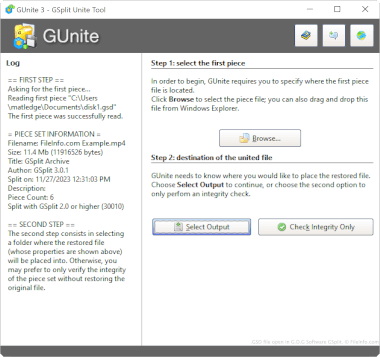.GSD File Extension
General Station Description File
| Developer | PROFIBUS & PROFINET International |
| Popularity |
3.6 | 8 Votes |
What is a GSD file?
ASCII text configuration file used for PROFIBUS DP (Decentralized Peripherals) or PA (Process Automation) devices; contains keywords and configuration information separated by line breaks; can be created with a text editor, the PROFIBUS GSD Editor, or another tool that supports PROFIBUS.
More Information
PROFIBUS (Process Field Bus) is a set of computer network protocols used by networked devices in automated manufacturing. GSD files describe device communication features, which enable control and interoperability of sensors, motors, switches, actuators, and other components on a PROFIBUS network.
General Station Description files also use these language-specific extensions:
- ".gse" - English
- ".gsf" - French
- ".gsg" - German
- ".gsi" - Italian
- ".gsp" - Portugese
- ".gss" - Spanish
Programs that open or reference GSD files
Graphtec Vector Graphics File
| Developer | Graphtec |
| Popularity |
3.2 | 5 Votes |
Vector graphics image format developed by Graphtec; used for creating cutting templates for Craft ROBO and Wishblade and craft cutters; can create designs used for crafts, such as adhesives, laminates, t-shirt silk screens, and other printed designs.
More Information
GSD files are also supported by Accugraphic Klic-N-Kut scrapbook cutting machines. The Cutting Master ROBO plugin for Adobe Illustrator allows the program to plot directly to the cutter or plotter, but does not enable Illustrator to read GSD files.
Programs that open GSD files
GSplit Split File Piece
| Developer | G.D.G Software |
| Popularity |
3.0 | 2 Votes |
A GSD file may also be a piece of a file split by G.D.G Software GSplit. It contains a portion of the split file's data, which GSplit can combine with other pieces to reconstruct the file. GSD files are often named disk#.gsd.
More Information
Using GSplit, you can split large files (such as archives, disk images, and videos) into smaller pieces. This makes the split files easier to transfer and share (since you can transfer individual pieces one at a time, rather than the whole file at once).
When GSplit splits a file, it portions the file's data into several GSD files. The first of these files is typically named disk1.gsd. Depending on the split file's size (and a user's GSplit settings), disk1.gsd may be accompanied by any number of other disk#.gsd files.
Usually, GSD files are accompanied by a similarly-named .EXE file (e.g., disk1.exe). By double-clicking this file, you can quickly recombine the associated GSD files into the file from which they were split.
NOTE: If you do not possess all of a split file's resulting GSD files, you will not be able to reconstitute that file. For example, if you have disk1.gsd and disk3.gsd, but not disk2.gsd, you likely will not be able to recombine your GSD files.
Common GSD Filenames
disk1.gsd - The default name GSplit assigns to a split file's first piece.
How to open a GSD file
You can use GSplit (Windows) to recombine a set of GSD files into the file from which they were split. To do so:
- Open GSplit and click Unite.
- Click Browse....
- Select the first GSD file associated with your split file (often named disk1.gsd).
- Click Select Output.
- Select an output destination and click Save.
Provided that you have all the GSD files created from the original, split file, GSplit will use those files to create a copy of the split file.
